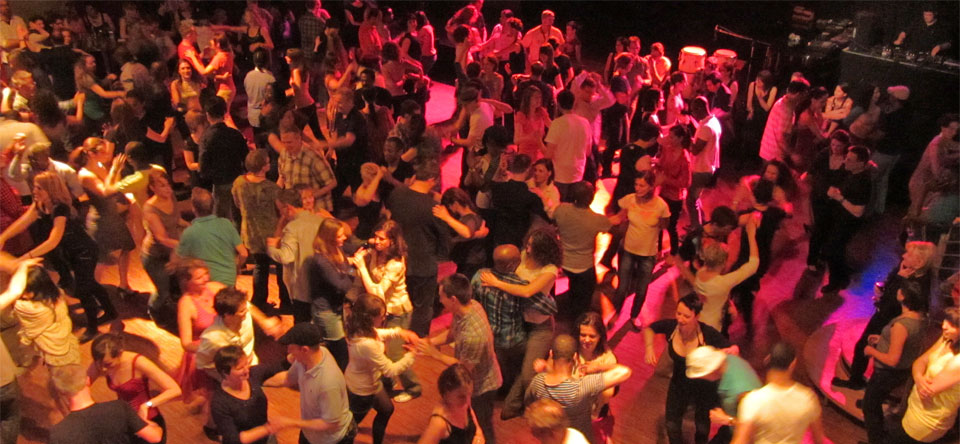The Basic Principles Of Dance Fridays
Table of ContentsThe 3-Minute Rule for Dance FridaysThe Facts About Dance Fridays RevealedThe Buzz on Dance FridaysThe 15-Second Trick For Dance Fridays5 Simple Techniques For Dance FridaysThe Dance Fridays DiariesHow Dance Fridays can Save You Time, Stress, and Money.
The major distinction that distinguishes the Miami-style from various other North American styles is the "Atras" or "Diagonal", back damaging actions carried out backwards diagonally rather than relocating forwards and in reverse as seen in the New york city style. Dancers do not change their body weight substantially as seen in various other styles. Rather, professional dancers maintain their top body still, poised and kicked back, concentrating on foot activity.A major difference in between Cali Design and Miami-style is the last is specifically danced on the downbeat (On1) and has components of shines and show-style added to it, following arsenals of North American designs. Miami-style has lots of followers, especially Cuban-Americans and other Latinos based in South Florida.
Numerous of the steps entail rapidly exchanging companions. "Rueda de Miami" come from in the 1980s from Miami, is a formal design with numerous rules based on a mix, and is a hybridization of Rueda de Cuba & North American dance styles, with some routines mirroring American culture (e.
Coca-Cola, Dedo, Adios) which is not found in located traditional Cuban-style Rueda (salsa dancing club san francisco). Cali is also understood as the "Funding de la Salsa" (Salsa's Capital); due to salsa music being the primary genre in parties, clubs and festivals in the 21st century.

The 6-Second Trick For Dance Fridays
They include numerous acrobats such as partnered flips to captivate with these jaw going down stunts. Their maneuvering is complex and precise, helping numerous Colombian Style professional dancers win major globe championships. Cali hosts lots of yearly salsa occasions such as the World Salsa Cali Festival and the Encuentro de Melomanos y Coleccionistas.
For instance, scientists in the all-natural scientific researches examined the math of salsa dancing steps. In the social scientific researches, scientists have actually studied salsa dance to recognize, for instance just how the Latino identity is linked to salsa dance. The research of salsa dancing has been researched as a allegory to understand emotional and social economic situations.
and, scientists have actually additionally made use of salsa dance to research the ephemerality of social groups. Salsa music the music to which salsa is danced Mambo a dancing style which heavily influenced salsa dance Palladium Ballroom a New york city City place that helped promote Latin songs and dance throughout the 1940s and 1950s Dance a ballroom dancing that greatly affected salsa World Salsa Championships a listing of worldwide competitions for salsa dance Cuban salsa a popular form of salsa dancing from Cuba Boggs, Vernon (1992 ).
The Dance Fridays Ideas
ISBN0-313-28468-7. OCLC24908952. Hutchinson, Sydney (2004 ). " Mambo on 2: The birth of a new form of dancing in New York City" (PDF). Centro Journal. 16: 108137. ISSN1538-6279. " What Is Salsa (Dance)?" (https://peatix.com/user/20132966/view). 2023-03-13. Retrieved 2023-05-26. Young, Takeshi (26 June 2023). " Latin Dance". Salsa Vida. Fetched 5 October 2023. " Inventing salsa".
Salsa Vida. 26 June 2023. Obtained 5 October 2023.

The city of music memory: salsa, document grooves, and prominent culture in Cali, Colombia. Salsa Vida SF. The Journal of Popular Culture.
Our Dance Fridays Ideas
:10.
Something failed. Wait a minute and attempt once again Try once again.
Some Ideas on Dance Fridays You Should Know
We're speaking concerning the dance, not the scrumptious South American condiment. The beginnings this article of words "Salsa" as the name of a dance has provided discussion for decades. One of the most popular (and possibly accepted) concept is that Cuban and Puerto Rican artists in New york city created the phrase in New York in the 1970's, to explain the spicy fusion of songs they were creating out of the rhythms and concepts of Cuban child montuno, guaracha, chachacha, mambo and bolero.